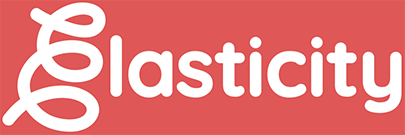I am a fan of H&R Block. It’s not because of their products, service or technology as I’ve actually never used their tax preparation services. I’m a fan of H&R Block because they believed in our boutique agency to develop and execute two pieces of work of which I am exceptionally proud.
As a result, each year I pay close attention to how the company markets during tax season for two reasons. One, I want them to succeed. Second, I hope they learn from the internal failings I experienced caused by the silos inside the organization’s various marketing communications groups.
This year I was hopeful when I saw Block leave behind its bowtie-wearing octogenarian personality it had used in mass market advertising the past few years, and instead opted for popular actor Jon Hamm for its new Get Your Taxes Won campaign.
Creative being subjective, I enjoyed the new Hamm campaign as he’s certainly has strong moments in the various ads that have been running on television. In the campaign’s broader execution, however, Block undeniably fails. The brand has demonstrated a total disregard for today’s consumer information gathering habits as well as a clear lack of understanding about the need for surrounding target audiences in multiple channels at every turn.
While the ads have been peppered across network TV, Block has only shared one Hamm video on its Facebook page (that I could find as of this posting) from the campaign. That share came on Christmas Day, when few are even paying attention and there are more references on its Facebook page about an appearance by Block executives on The Steve Harvey Show than about the “Get Your Taxes Won” campaign. Even in and around the Super Bowl — when Block could have slyly drawing a line between winning with taxes and winning the big game — H&R Block was posting about a partnership with IBM and Watson.
Perhaps there are dark posts that I’ve missed. But if I have not — come on, Block — it’s tax season for crying out loud and there are 1.8 billion Facebook users who just might be interested in one of the most bankable stars in Hollywood.
Much of this silo-oriented behavior takes me back to our time with Block. We were hired by the then-director of social media (he’s since left) who wanted us to help the brand disrupt, reach younger audiences and break through the clutter. And that’s what we did as ‘Stache Act drove Block’s best tax season in history and Hipster performed admirably and was lauded for its creativity.
Both campaigns, however, were executed on shoestring budgets and each, perplexingly, ran concurrent with multiple other Block campaigns the brand had running in competing marketing channels. The brand folks were doing their own thing, the PR people did their own thing, there was no integration between social media, brand communications, earned media (PR). And based on the new Hamm campaign, the culture of competing, ineffective marketing silos would seemingly remain with digital being a total afterthought.
The reality is that, driven by technology and thus evolving consumer information gathering habits, today we are living in an ADHD world where we are surrounded by an estimated 9,000 messages, ads, warnings, and bits of information each day, according to the USC Annenberg School for Communication and Journalism.
Therefore, beyond developing uniquely disruptive creative that breaks through the immense clutter, brands also must surround our target audiences at every turn – whether it be mass market (TV), paid and organic social, paid search, earned media, banner ads, blogs, sandwich boards, urinal cakes, whatever. You must think omni-channel, play everywhere your audience plays and speak to them in the tone they speak.
A few ideas where Block could have really taken Get Your Taxes Won to a more integrated level:
- At the very least sharing all of the TV spots on Facebook and Twitter sporadically;
- Leading with the message of winning throughout the NFL playoffs, post predictions purportedly from Hamm in social channels as to who might win each game as well as pitching Hamm to sports media as a humorous guest;
- Creating social memes featuring Hamm for any social channel — Instagram, Twitter, Facebook — that furthers the idea about how consumers can win today using the same relatively cute humor the TV campaign leverages;
- Even banner ads that ask if people are “Tired of Losing” with Hamm’s face that directs back to a Block website;
Again, H&R Block, I am a fan. Perhaps I’ve missed dark posts or targeted paid social intended for a different audience — I hope I have. But without question, you’ve left too much opportunity on the table. The Hamm effort, while creatively adequate, does not cut the mustard in today’s media environment.



